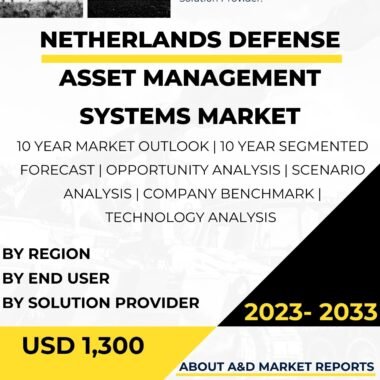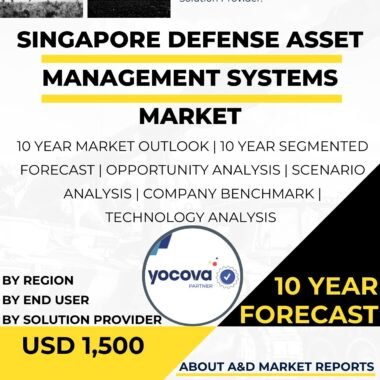Description
Australia Defense Asset Management Systems Market
The Australia Defense Asset Management Systems Market is a key part of the country’s defense infrastructure. It supports the complete lifecycle of defense assets, including equipment, vehicles, facilities, and technology. Effective management ensures the Australian Defence Force (ADF) maintains high readiness while maximizing asset value and performance.
What Is Defense Asset Management?
Defense asset management involves identifying, tracking, maintaining, and optimizing assets. It helps the ADF make better decisions, plan resources, and extend the life of critical equipment.
Asset Identification and Data Management
The process begins with asset identification.
All assets are recorded in a central database. This record shows their location, condition, and maintenance history. A clear database supports accurate planning, budgeting, and operational readiness.
Maintenance Planning in the Asset Management Systems Market
Regular maintenance keeps assets reliable and safe.
Maintenance schedules are created based on usage, manufacturer guidelines, and each asset’s importance. Asset management systems help plan and track these tasks, preventing failures and reducing downtime.
Tracking and Monitoring of Defense Assets
Real-time tracking is a major capability of modern systems.
Technologies like RFID, GPS, and embedded sensors show the exact position and status of assets. This is especially important for vehicles, aircraft, and other mobile platforms. Up-to-date information improves operational response and mission planning.
Risk Management in Asset Operations
Risk management is another essential area in the Australia Defense Asset Management Systems Market.
Defense systems must monitor risks related to safety, compliance, obsolescence, and cyber vulnerabilities. Early detection allows the ADF to prevent disruptions and protect personnel.
Lifecycle Management of Defense Assets
Lifecycle management helps decide when to maintain, upgrade, or retire assets.
It ensures performance needs are met without overspending. This long-term view also supports future capability planning.
Impact of Advanced Technologies
New technologies have transformed the defense asset management process.
AI and Predictive Analytics
AI tools analyze data from sensors and systems.
They help predict failures before they occur and reduce maintenance costs.
IoT and Real-Time Connectivity
IoT devices send continuous updates about asset health and performance.
This increases situational awareness and supports faster decision-making.
Sustainability in Defense Asset Management
Australia is giving more attention to sustainability.
Modern asset management includes energy-efficient equipment, reduced waste, and lower emissions. These initiatives support national environmental goals and improve operational efficiency.
Interoperability and Information Sharing
Defense assets must work smoothly across all branches of the ADF.
Integrated systems improve data sharing and coordination during joint operations and multinational missions. This ensures stronger mission execution and operational flexibility.
Cybersecurity and Digital Protection
As defense assets become more connected, cyber threats increase.
The asset management systems market focuses heavily on strong cybersecurity. Protecting data, preventing unauthorized access, and defending critical systems are top priorities.
Government Policies and Defense Investments
Government strategies and defense budgets shape market growth.
Australia continues to invest in advanced systems that support modernization and long-term defense capability. These investments strengthen national security and operational performance.
Conclusion
The Australia Defense Asset Management Systems Market is vital for maintaining a capable and efficient ADF.
It enhances asset visibility, supports predictive maintenance, improves safety, and enables better decision-making. With the rising use of AI, IoT, and cybersecurity solutions, asset management is becoming smarter and more integrated. As defense needs evolve, continued investment in advanced asset management systems will help Australia meet future challenges.




